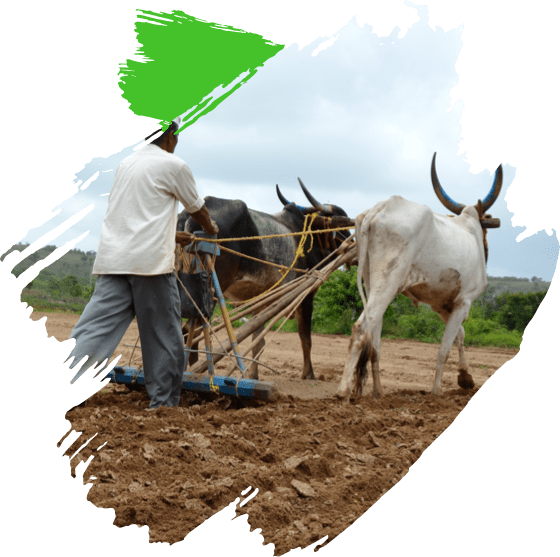Rural Poverty
The Fragility of Rural India
280 million rural Indians live in abject poverty – their fragile existence threatened by an overdependence on unproductive agriculture; their vulnerability to climate change; and the severely degraded ecosystems in which they live, and rely upon, for life and livelihood.
And it is the rainfed parts of the country that are the hardest hit. But whilst these rainfed drylands have been the most neglected, they also possess the greatest untapped potential for growth and development in India. With the right investments and support, these areas can be transformed – from degraded ecosystems and impoverished villages, to vibrant hubs of prosperity.
The Fragility of Rural India
280 million rural Indians live in abject poverty – their fragile existence threatened by an overdependence on unproductive agriculture; their vulnerability to climate change; and the severely degraded ecosystems in which they live, and rely upon, for life and livelihood.
And it is the rainfed parts of the country that are the hardest hit. But whilst these rainfed drylands have been the most neglected, they also possess the greatest untapped potential for growth and development in India. With the right investments and support, these areas can be transformed – from degraded ecosystems and impoverished villages, to vibrant hubs of prosperity.
Extent of the problem

of India’s farmers rely on rain-fed agriculture

of the gross cropped area in India is under rain-fed farming

of the rural population is abjectly poor

of India’s farmers own less than 2 hectares of land
The root cause of Rural Poverty
Despite being a complex issue, rural poverty can actually be unpacked into four root
causes which fuel its growth:

Degraded Ecosystems in
Rural India
Much of the world’s poor are highly dependent on the ecosystems in which they live. Unfortunately, the ecosystems in much of rural India are highly degraded. The result? The ecosystem goods and services that communities depend upon are severely limited, threatening the ability for survival there.
And driven by sheer necessity, the poor become perpetrators of further degradation. They live from hand-to-mouth, trying to meet the needs of the present, at the cost of the future – destroying their immediate environment for their present survival and further spiralling downwards into poverty.
Climate Change
Climate change is real and it is upon us. It will not only increase the population living in poverty, but will also exacerbate the conditions of those currently impoverished.
And it will hit rural India the hardest, because they have the least capacity to adapt. How?
- Climate Change Directly Impacts Agriculture
- Droughts, Floods & Pest Attacks Intensify
- Ecosystem Goods & Services are Impacted


Low Agriculture Productivity
Agricultural productivity in India is amongst the lowest in the world mainly due to severe land degradation, and unsustainable agricultural practices – with rainfed parts of India being far less productive than irrigated parts.
Farmers in rainfed areas earn only 20-30% of their income from farm-related activities – resorting to migration and labour to bridge the gap – while farmers in irrigated areas earn as much as 60% of their income from agriculture. By merely increasing the productivity of agriculture, poverty can quickly decline.
Overdependence on Agriculture as a Source of Income
Although the number of people employed in the non-farm sector has steadily risen over the past decade, agriculture remains the primary source of livelihood for 58% of India’s population.
However there is a need for increased diversification into other agro-based livelihoods as well as the growth of non farm livelihoods, to provide supplementary income to farming households and to make rural communities sustainable.
The diversification from agriculture into other agro-based and non-farm livelihoods is an important source of income, economic growth and transformation not just for rural India, but for the whole economy as well.



